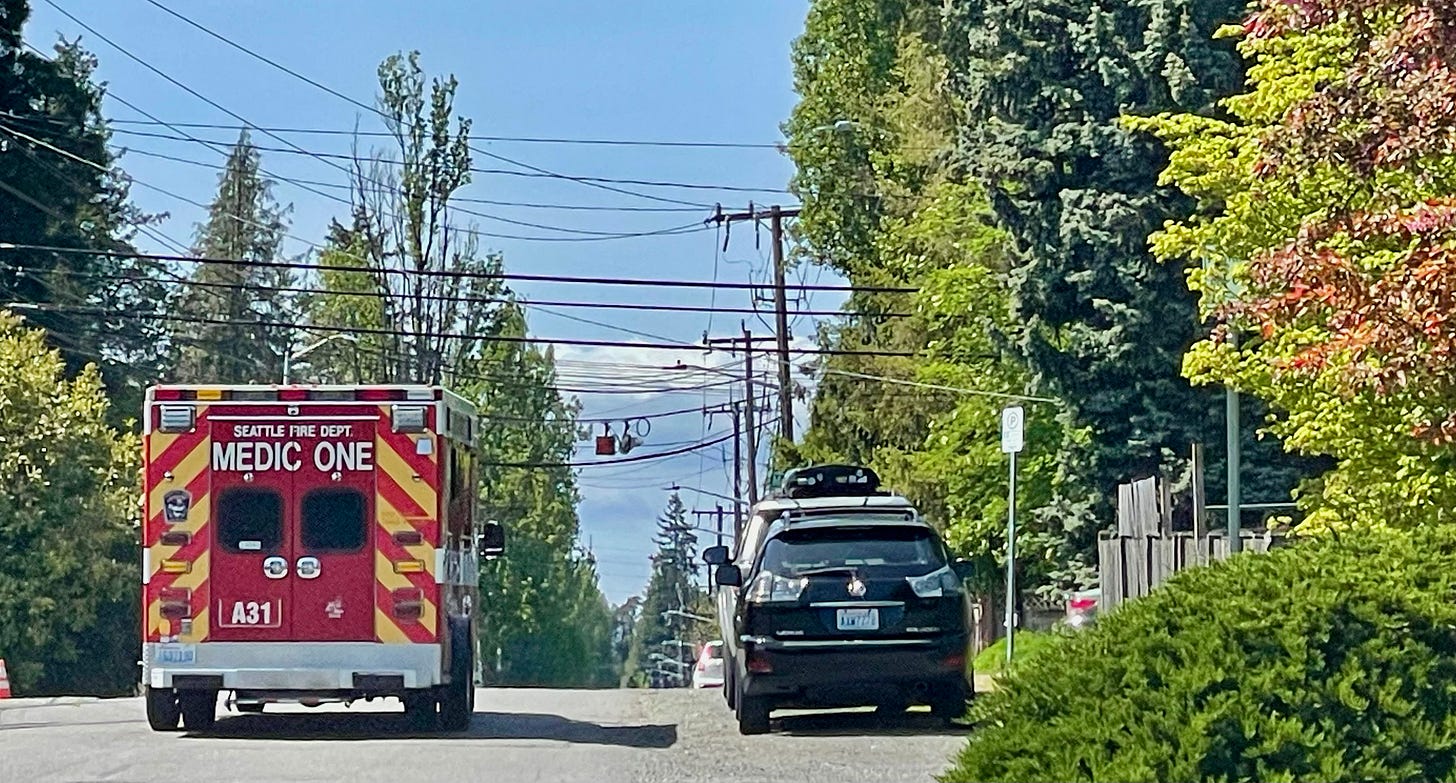We’re in the ambulance.
We know the jostle of a crappy suspension. We know the rush of life-and-death, the small talk and medical jargon. We’ve seen everything—psychosis and domestic abuse, busted hips and chest pain, you name it.
But there’s something about the way the police officer leans in toward this patient, this ghost of a man, just sixty-eight pounds.
We release the blood pressure cuff from a spindly, wraithlike wrist.
And the ghost is smiling. He asks the police officer if this is freedom, the back of this tricked-out medical van.
“I set the fire,” he confesses. “I made the prison burn. I have been kept a secret my entire life, but now the secret is out.”
That prison is a home, a house on Blake Street, just south of the park tennis courts and I-84. And the evidence is in his hand. He’s white-knuckling the thing, a red-and-white Bic.
He confirms the month and year but can’t name the date.
“For twenty years,” he says. “My father and stepmother locked me in that room for twenty years.”
We feel the tell-tale bend before the ambulance screams into the Waterbury ER, feel it like symphony strings, rising up from our gut. How can that be? We try to do the math of appearance and implications. Twenty years and that face?
The math is impossible.
“Since the fourth grade,” he continues, so frail and spectral we can almost see the glow of being, right there, shining from the cavity of his soot-stained chest.
And then we’re rushing the gurney out the back, and the ghost is saying thank you thank you thank you, and we’ll never know how the story ends.
* * *
My cousin Cody, the one who pulled a fishing hook out of my head two summers ago, was an EMT for a time. His stories are the closest I’ve been to the interior of an ambulance.
But I’ve been thinking about this story, about the kid who got locked away at age twelve, ever since I read it in the New York Times a few weeks ago. It felt like I was inside the story or like I needed to get inside it—I can’t say which—and so I put us there, you and me, in the ambulance with the man.
He now goes by S.
Newspaper reports confirm that the door to his cell, a storage room with a view of the street, was reinforced with plywood and multiple locks. They also confirm that S used a lighter to ignite hand sanitizer and that a firefighter arrived on the scene and carried S to an ambulance. The firefighter told a reporter that it felt like he was carrying nothing.
* * *
Perhaps it might be accurate to say I have lived kitty-corner to emergency vehicles.
Once, during our doomed remodel, an Emergency Response Team van drove by our house, and I had the thought, “Oh, they’re finally here.” That was the week our toddler Zade flooded our new carpet and our daughter, Rana, got her first concussion.
Or there was the time I was at Hiroshi’s soccer game—this was a few weeks after he and Rana, our teenagers, had left our home and gone to stay at their biological aunt’s. I was huddled next to Rana, her younger cousin, and her aunt as Roshi flew around the field.
I could write a separate tome on the social dynamics on that sideline—I suspect that everyone but the cousin was exploding with inner dialogue. Rana was steely, avoiding eye contact, and I was squirrelly, unsure of how to interact, but her cousin was buzzing, and buzzing with news.
Rana, she shared, had fainted last week, and they had called 911. The paramedics went where I cannot safely go, found a way to park on that cramped street and administer care that our daughter may have refused if I had made the call. But I hadn’t known. No one—not Rana, and not the adults responsible for her care—had told me.
Yes, my daughter finally said, she was all right now. Just a temporary thing.
* * *
Perhaps I imagine myself in that ambulance, right up in the action, because I know what it’s like to be excluded from the story.
Near the end of the Times article, we’re introduced to S’s biological mother, a diesel mechanic who cried and cried and screamed when she heard the news and attended the initial hearings. It’s revealed that she signed away her parental rights to the man’s father when he was an infant. The article invites us to imagine her split screen shock when her memory of swaddled babe photos is replaced by body cam shots, his emaciated form rising to greet her from the ashes.
Perhaps we might wonder about her absence from the man’s story—it’s mentioned that S’s father remarried and moved shortly after his birth, but did she try to keep in touch? Does it matter?
I am not that woman.
There are people in our story who signed away their parental rights, people who went months or years without contacting our teenagers during the five years they lived in our home, people who attached strings to their love.
I am not perfect, but I am not those people. I have been there in the fun times, and now I am there on the sidelines, watching and waiting, texting and fumbling around, unsure of what to do.
But please, save me a seat in the ambulance.
* * *
I’m not sure whether this is a thing on Substack, but I intend to write a follow-up this week. If you’re interested in reading more about S, here’s the New York Times story: https://www.nytimes.com/2025/04/08/nyregion/ct-waterbury-captive.html. And a more recent update: https://www.cnn.com/2025/04/15/us/waterbury-connecticut-man-held-captive-statement/index.html.






Great piece Andrew…if you want to read something somewhat similar in tone and subject matter check out Joe Connelly’s “Bringing out the Dead” (1998)